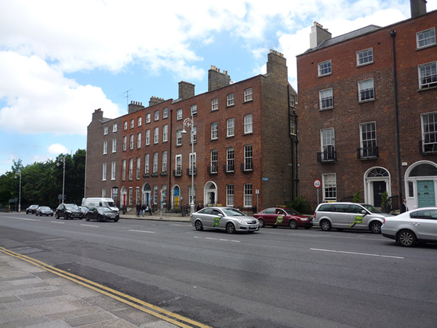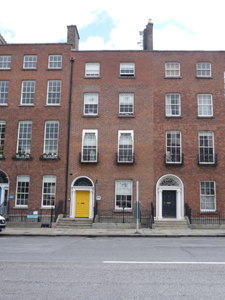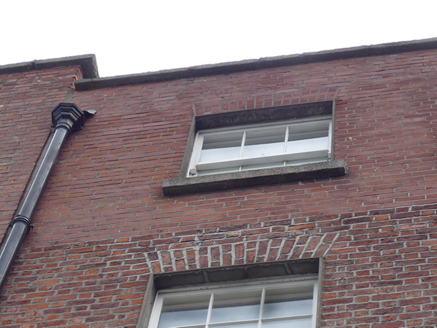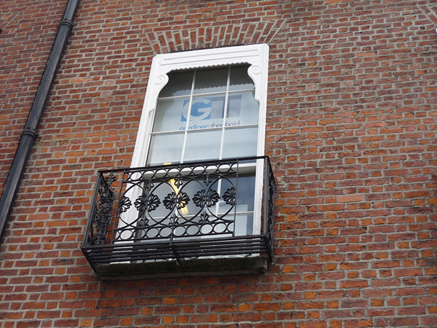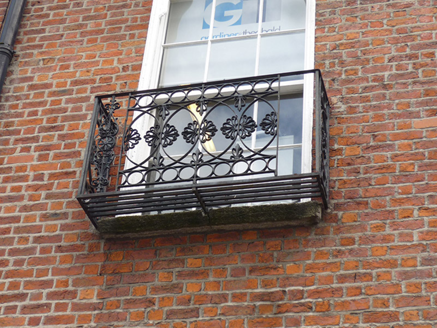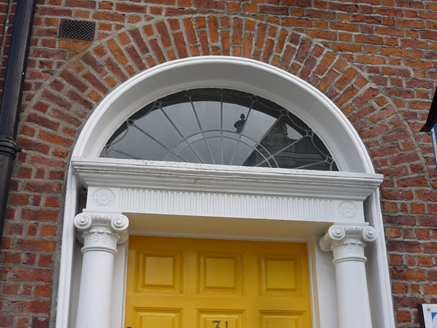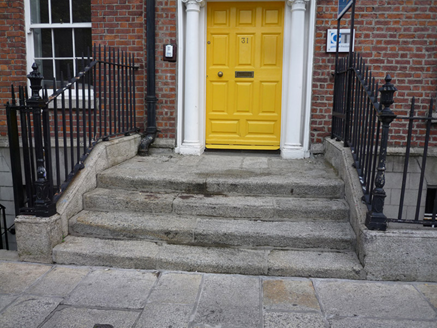Survey Data
Reg No
50100438
Rating
Regional
Categories of Special Interest
Architectural, Artistic
Original Use
House
In Use As
Office
Date
1770 - 1790
Coordinates
316476, 233518
Date Recorded
01/07/2016
Date Updated
--/--/--
Description
Attached two-bay four-storey former house over basement, built c. 1780 as one in unequal pair with No. 30, having two-storey return to rear. Now in commercial office use. M-profile pitched roof, hipped to north end, having rebuilt parapet with projecting masonry coping, brick chimneystacks to party walls with terracotta pots, concealed gutters, cast-iron hopper and downpipe. Flemish bond red brick walling to front elevation, rebuilt to top floor, on granite plinth over ruled-and-lined rendered basement walling; rendered to rear elevation and return. Square-headed window openings, diminishing in height to upper floors, with rendered reveals and granite sills. Timber sliding sash windows with ogee horns, nine-over-six pane to first floor, three-over-three pane to top floor and six-over-six pane elsewhere. Basement to front has wrought-iron grilles, and first floor front has decorative cast-iron balconettes, with scalloped and scrolled cast-iron trim to window heads. Round-headed doorcase with moulded reveals, pro-style Ionic columns, entablature with fluted frieze and rosettes, leaded batwing fanlight and eleven-panel timber door with weatherboard and plain brass furniture. Granite flagged platform bridging basement with four steps to street. Basement area enclosed by wrought-iron railings with decorative cast-iron posts on moulded granite plinth, and having wrought-iron gate and concrete steps to basement area, and replacement timber glazed and sheeted door beneath entrance platform.
Appraisal
A late eighteenth-century Georgian house with little loss of historic fabric and detailing. It retains the well-balanced proportions and graded fenestration typical of the period and is enriched with a decorative doorcase and leaded fanlight. Construction of Merrion Street began in the early 1750s, following the completion of Kildare (now Leinster) House. In 1762, when Merrion Square was laid out, the middle portion of Merrion Street became the west side of the square. No. 31 makes an important contribution to the early streetscape character, variety and architectural quality of this district of the south city Georgian core, which has been well retained along this stretch of the street.
